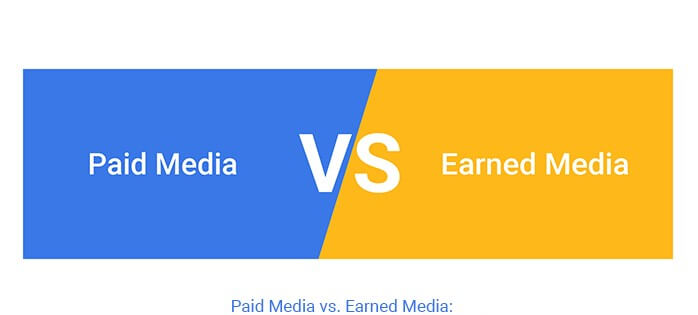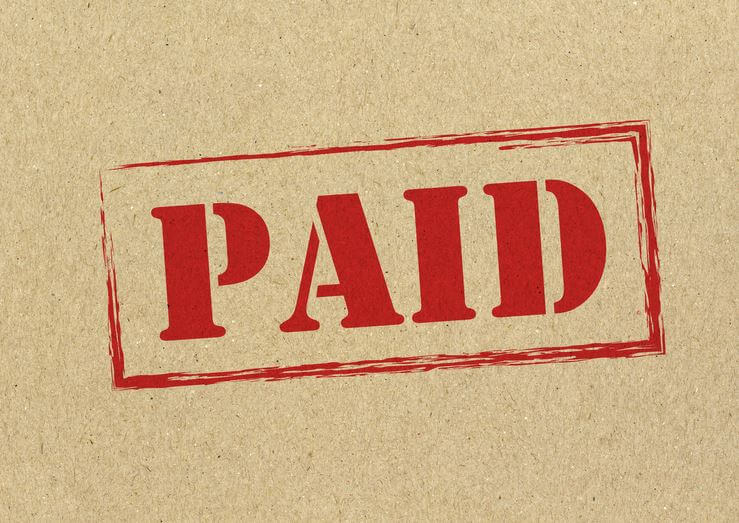The Ultimate Guide to Understanding Paid and Earned Media
In today’s digital world, it can be challenging to keep track of all the different types of media and how they impact your paid and earned media. But fear not! This comprehensive guide will break down the differences between paid, owned, and earned media and help you understand how to use each type to your advantage.
Paid Media
Paid media is content that you pay to distribute. This can include social media, search engines, and display ads. The primary benefit of paid media is that it provides immediate visibility for your content. With paid media, you can target specific audiences and track the success of your campaigns. However, it’s important to remember that paid media is only effective while paying for it. Once you stop paying, your visibility will decrease.
Earned Media
Earned media is content that you make through organic channels. This can include social media mentions, customer reviews, and news articles. The primary benefit of earned media is that it’s free and can significantly impact your brand’s reputation. Earned media is also more credible than paid media because it comes from a third-party source. However, making media can be complex, and controlling the message is not always easy.
Benefits and Drawbacks of Paid Media
Paid media can be an effective way to get your brand in front of a broad audience quickly. With paid media, businesses can target specific demographics, locations, and interests, making it easier to reach potential customers. Paid media can also significantly increase brand awareness, generate leads, and boost sales.
However, paid media can be expensive, especially for smaller businesses with limited budgets. With so many companies vying for attention, standing out in a crowded marketplace can be challenging. Another drawback of paid media is that it is often seen as less authentic than other forms of media, making it less effective in building trust with consumers.
Benefits and Drawbacks of Earned Media
Earned media can be a valuable tool for businesses to establish trust and credibility with their audience. Because earned media is often created and shared by customers, it can be seen as more authentic and trustworthy than other forms of media. Additionally, earned media can be a cost-effective way to reach a broad audience, as businesses do not have to pay for the content.
However, businesses have little control over earned media and cannot guarantee its effectiveness. Plus, earned media can take time to generate, and there is no guarantee that it will be positive. Negative reviews or customer complaints can quickly spread on social media, damaging a brand’s reputation.
Paid vs. Owned vs. Earned Media
So which type of media should you focus on? The truth is, you need all three. Paid media provides immediate visibility, the owned press allows you to build a loyal audience, and earned media helps establish your brand’s credibility. A well-rounded marketing strategy should incorporate all three types of media.
But how do you balance the different types of media? The answer depends on your specific marketing goals. You may want to focus more on paid media to increase brand awareness. Owned media may be the way to go to build a loyal audience. And if you want to establish your brand’s credibility, earned media should be a top priority.
Conclusion
Paid and earned media are essential in today’s digital marketing landscape. Understanding the differences between the three media types allows you to create a well-rounded marketing strategy that achieves your goals. Remember, paid media provides immediate visibility, other owned press will enable you to build a loyal audience, and earned media helps establish your brand’s credibility. Incorporate all three media types into your strategy and watch your brand thrive.
FAQs
What are earned and paid media examples?
Earned and paid media are two different types of media that can be used in marketing and advertising.
Earned media refers to the publicity and exposure a brand receives through third-party sources, such as media outlets, word-of-mouth, social media shares, reviews, and recommendations. It is called “earned” because it results from the brand’s efforts to build its reputation and create high-quality content that people want to share and talk about.
Some examples of earned media include:
- Press coverage in newspapers, magazines, and online publications
- Social media shares, likes, and comments
- User-generated content, such as customer reviews and testimonials
- Influencer endorsements and mentions
- Public relations efforts, such as events, stunts, and campaigns
Paid media, conversely, refers to any form of advertising or promotion that a brand pays for. It includes traditional forms of advertising, such as print and TV ads, and online ads, such as search engine marketing (SEM), social media ads, display ads, and sponsored content.
Some examples of paid media include:
- Google AdWords and paid search ads
- Facebook, Instagram, and Twitter ads
- YouTube pre-roll ads
- Banner ads on websites
- Sponsored content on blogs and social media
- Native advertising in online publications
Both earned and paid media can effectively promote a brand and reach a wider audience, but they have different strengths and weaknesses. Earned media is often seen as more credible and trustworthy because it comes from independent sources, while paid media can be more targeted and measurable because the brand controls it.
Is paid or earned media better?
It is not a matter of whether paid or earned media is better, but rather which is more suitable for achieving specific marketing goals.
Earned media effectively increases brand awareness, builds credibility, and generates positive word-of-mouth. It can also be more cost-effective than paid media because it relies on organic reach and engagement from existing audiences.
Paid media, conversely, can be more targeted and measurable than earned media, making it a good option for driving specific actions, such as website traffic, leads, and sales. It can also reach new audiences and amplify the impact of earned media efforts.
In summary, both earned and paid media have advantages and disadvantages, and the best approach depends on the specific marketing objectives, target audience, and available resources. A well-planned marketing strategy may use both media types to achieve the desired outcomes.





